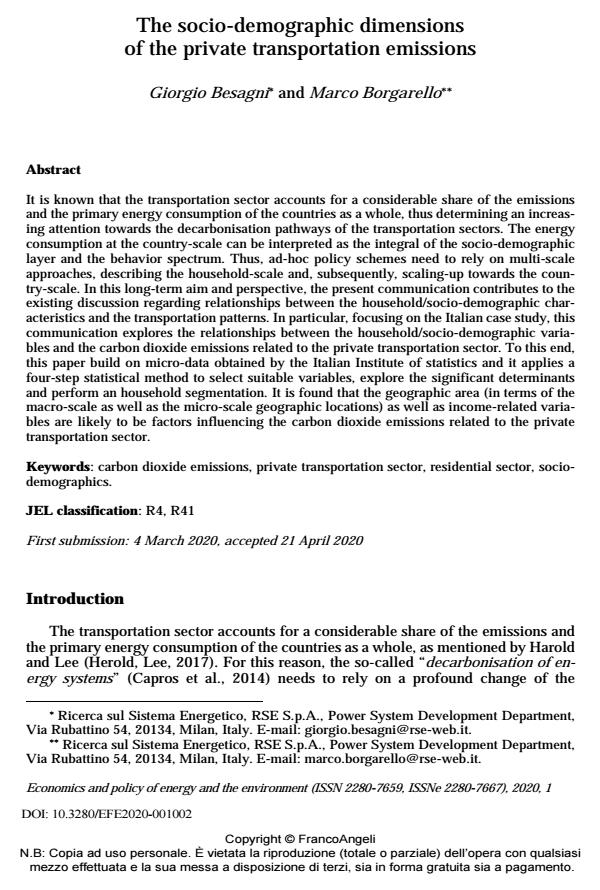The socio-demographic dimensions of the private transportation emissions
Titolo Rivista ECONOMICS AND POLICY OF ENERGY AND THE ENVIRONMENT
Autori/Curatori Giorgio Besagni, Marco Borgarello
Anno di pubblicazione 2020 Fascicolo 2020/1
Lingua Inglese Numero pagine 12 P. 13-24 Dimensione file 221 KB
DOI 10.3280/EFE2020-001002
Il DOI è il codice a barre della proprietà intellettuale: per saperne di più
clicca qui
Qui sotto puoi vedere in anteprima la prima pagina di questo articolo.
Se questo articolo ti interessa, lo puoi acquistare (e scaricare in formato pdf) seguendo le facili indicazioni per acquistare il download credit. Acquista Download Credits per scaricare questo Articolo in formato PDF

FrancoAngeli è membro della Publishers International Linking Association, Inc (PILA)associazione indipendente e non profit per facilitare (attraverso i servizi tecnologici implementati da CrossRef.org) l’accesso degli studiosi ai contenuti digitali nelle pubblicazioni professionali e scientifiche
It is known that the transportation sector accounts for a considerable share of the emissions and the primary energy consumption of the countries as a whole, thus determining an increas-ing attention towards the decarbonisation pathways of the transportation sectors. The energy consumption at the country-scale can be interpreted as the integral of the socio-demographic layer and the behavior spectrum. Thus, ad-hoc policy schemes need to rely on multi-scale ap-proaches, describing the household-scale and, subsequently, scaling-up towards the country-scale. In this long-term aim and perspective, the present communication contributes to the ex-isting discussion regarding relationships between the household/socio-demographic character-istics and the transportation patterns. In particular, focusing on the Italian case study, this communication explores the relationships between the household/socio-demographic variables and the carbon dioxide emissions related to the private transportation sector. To this end, this paper build on micro-data obtained by the Italian Institute of statistics and it applies a four-step statistical method to select suitable variables, explore the significant determinants and perform an household segmentation. It is found that the geographic area (in terms of the macro-scale as well as the micro-scale geographic locations) as well as income-related variables are likely to be factors influencing the carbon dioxide emissions related to the private transportation sector.
Parole chiave:Carbon dioxide emissions, private transportation sector, residential sector, socio-demographics.
Jel codes:R4, R41
Giorgio Besagni, Marco Borgarello, The socio-demographic dimensions of the private transportation emissions in "ECONOMICS AND POLICY OF ENERGY AND THE ENVIRONMENT" 1/2020, pp 13-24, DOI: 10.3280/EFE2020-001002